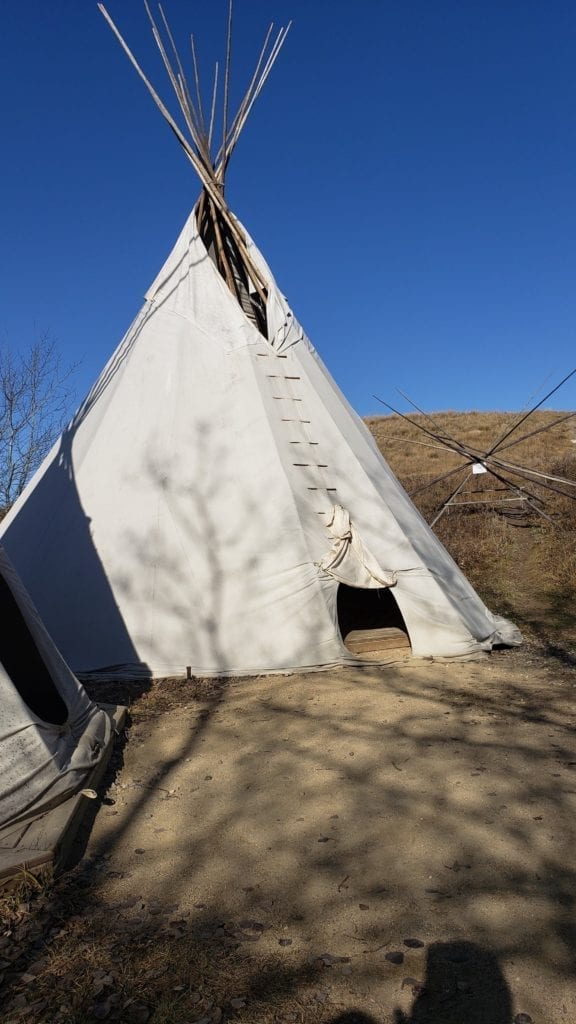“Culture is a positive mediator of wellness for Indigenous people,” shared Dr. Heather Foulds, who is Métis and an assistant professor in Kinesiology at the University of Saskatchewan. An Indigenous understanding of health includes not only physical and mental health, like in Western medicine, but also community, culture, and connection to spirituality.

Many cultural activities have a physical component. Here, a Métis woman performs a traditional dance | Heather Foulds
Research has documented better physical and mental health and higher self-esteem in Indigenous people with strong connections to cultural identity and traditions.
To understand how cultural connectedness influences physical activity—a contributor to good health—Dr. Foulds and her co-authors surveyed 124 members of the University of Saskatchewan’s Indigenous communities.
Their article was recently published in Applied Physiology, Nutrition, and Metabolism.
More physically active First Nations adults reported greater overall cultural connectedness, along with greater identity, spirituality, and belonging—after adjusting for significant effects of income, education, and moving away from home communities.
These relationships were also present for adults who identified specifically as Cree/Nehiyaw First Nations. Métis adults with high and low levels of physical activity did not differ in cultural connectedness.
To ensure measures of cultural connectedness were applicable to all participants, the authors used the Cultural Connectedness Scale (CCS)—developed specifically for First Nations populations—and the Multigroup Ethnic Identity Measure (MEIM), a survey used across ethnicities.
The questionnaires score different components of cultural connectedness (e.g., cultural identity, traditions, and spirituality with the CCS; ethnic identity, commitment, and affirmation with the MEIM).
Until recently, Indigenous communities had little influence on research that involved them and received little benefit. Funding agencies now encourage researchers to work collaboratively with community members at all stages of a research project. Academics across disciplines are beginning to adopt better practices for research in Indigenous communities.
The authors worked with local Indigenous organizations for a year to devise the study, and Dr. Foulds acknowledged their support, contributions, and input. “A lot of the questions that we asked were provided to us by community members,” she said.
For example, asking study participants about participation in traditional activities that involve being physically active, such as Ceremonies, Dance, Hunting, Trapping, and Snowshoeing.

For First Nations people, connection to culture is an important contributor to good health | Heather Foulds
A Community Advisory Committee, consisting of an Indigenous undergraduate student, graduate student, faculty member, staff member, and Elder, also guided and approved all aspects of the work—including which statistical comparisons would benefit the community.
Across Canada, Indigenous populations have experienced centuries of government policies intent on assimilation and cultural suppression, which are now reflected in higher rates of chronic diseases and mental health issues.
As Dr. Foulds explained, “it’s not an inherent genetic reason that Indigenous people are having poor health outcomes.”
To balance the negative narratives about Indigenous people that are prominent in academic literature, the authors used a strengths-based approach and focused on positive results.
Given their different histories and engagement with the Canadian government, it is not unexpected that Métis participants had a different relationship between cultural connectedness and physical activity than First Nations participants.
Dr. Foulds is now partnering with a Métis Local in Saskatoon to understand the factors contributing to cultural connectedness and health for Métis people.
Read the paper: Cultural connectedness as a determinant of physical activity among Indigenous adults in Saskatchewan in Applied Physiology, Nutrition, and Metabolism.
*Banner image: Red River cart | Heather Foulds




